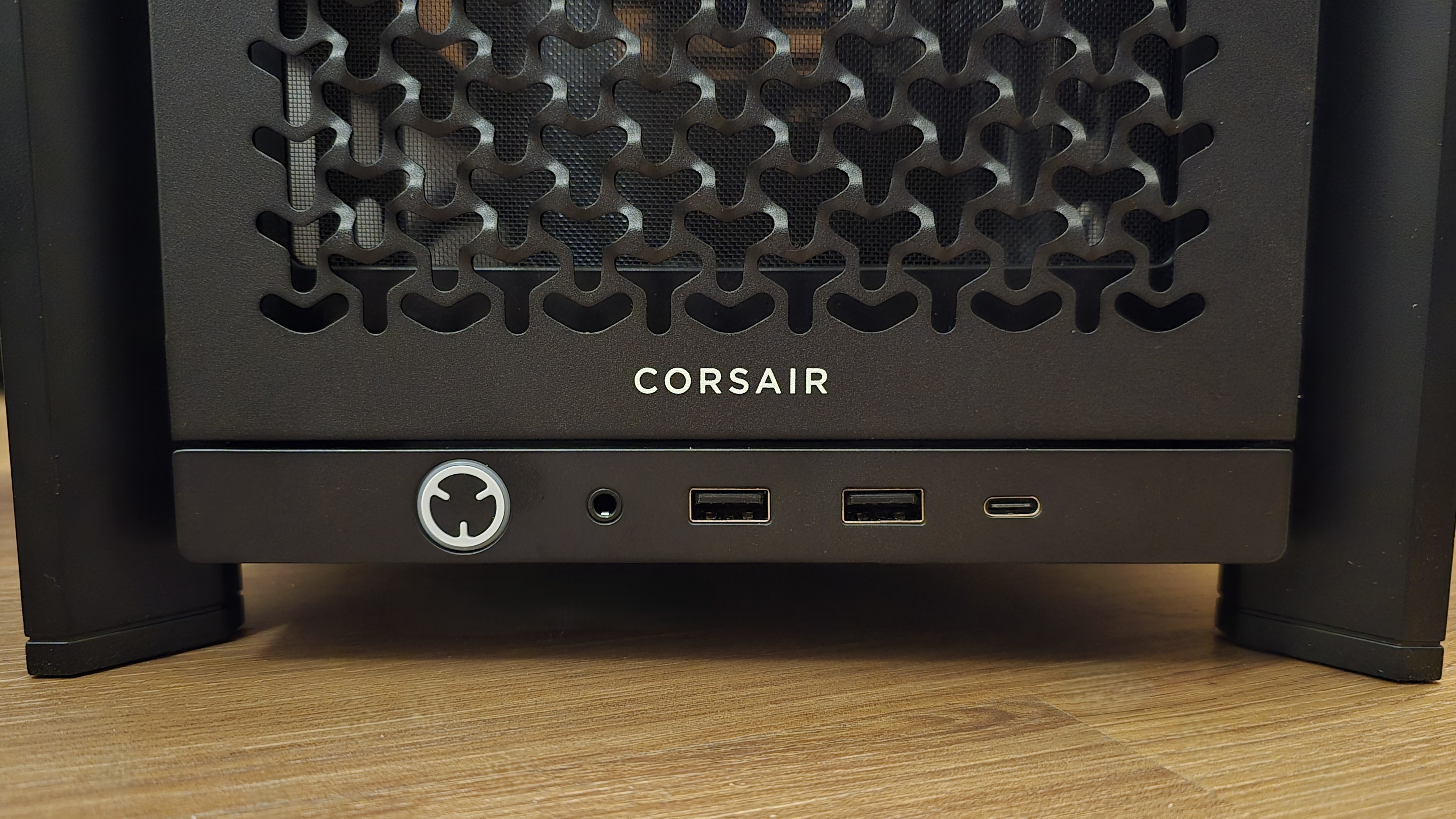Why you can trust Tom's Hardware
Maximum Thermal Performance – 30% fan speeds
The first set of tests are designed to appeal to those who love quietly running computers – with both system fans and the CPU fan limited to 30%, using Ocypus Gamma F12 BK ARGB fans for intake and exhaust. Of the four cases tested for today’s review, Corsair’s Frame 4000D performed the best, with 213.1W cooled while testing the CPU using Cinebench R23 multi-core benchmark.
You can consider this a measure of the case’s efficiency when set to low noise levels. Finally, remember that size matters: A smaller case like Montech’s Air 903 Max might have better results due to better airflow efficiency.
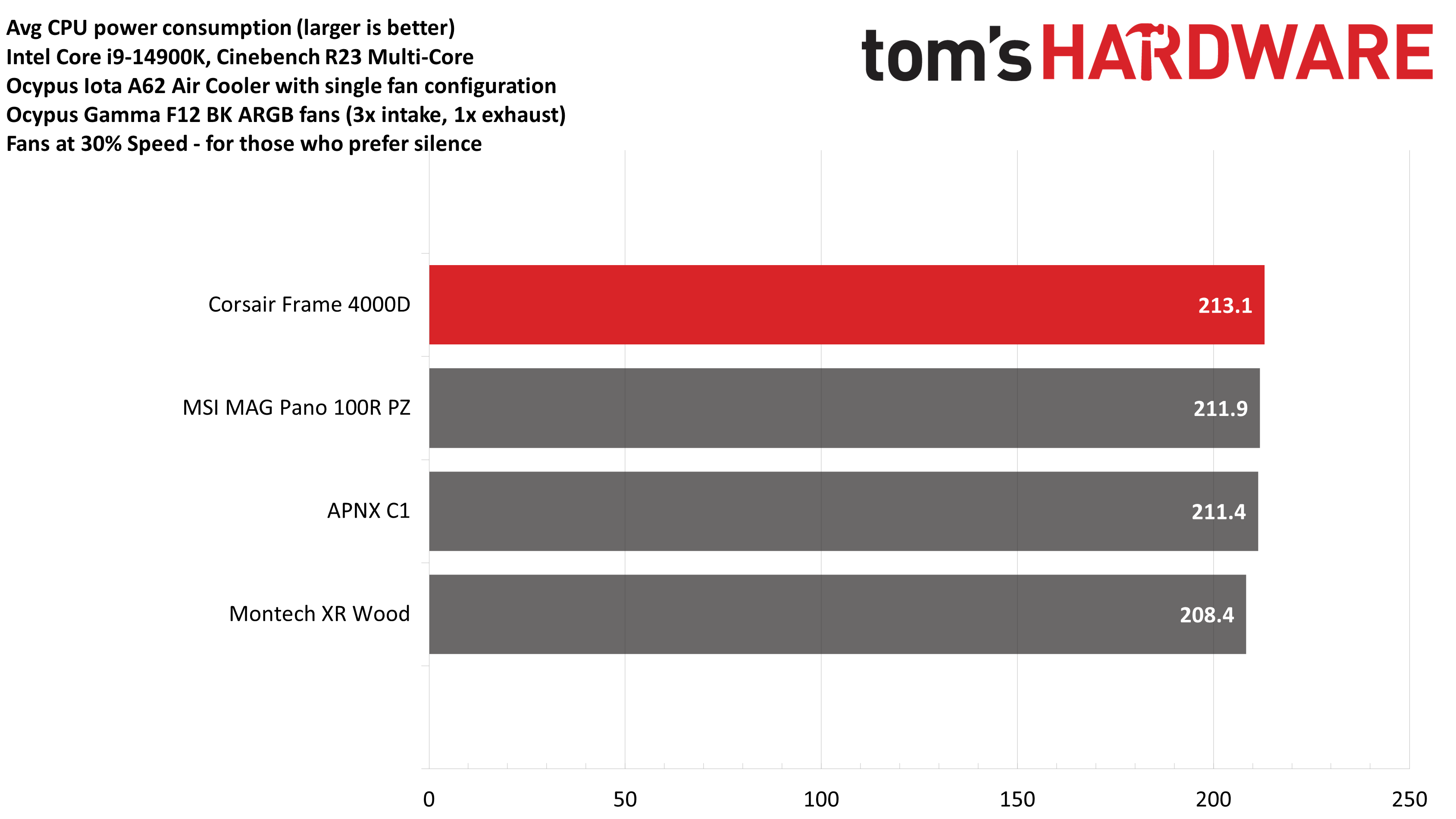
But CPU-only loads are only one way to examine thermal efficiency. How do things change when you use a CPU and GPU at the same time? We’ll look at both CPU package power and GPU results to answer that question.
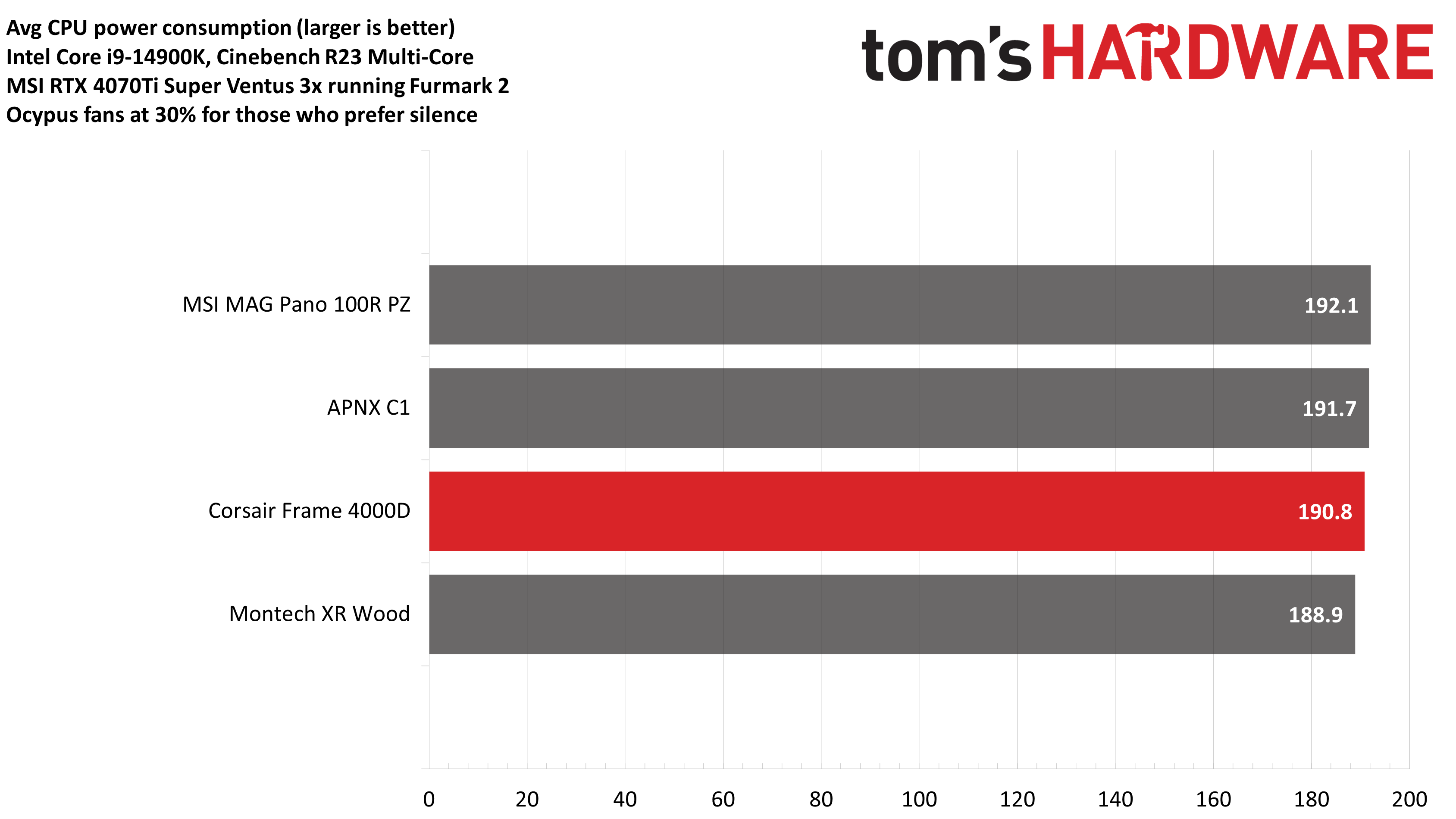
Looking at the CPU’s performance here, you’ll see there’s a small variance in results. At 190.8 watts cooled, Corsair’s result is halfway between the best and worst results shown. Running a load on the GPU and the CPU causes a decrease of about 23W compared to the results of our first test. This is due to the additional heat produced by the Nvidia RTX 4070 Ti Super.
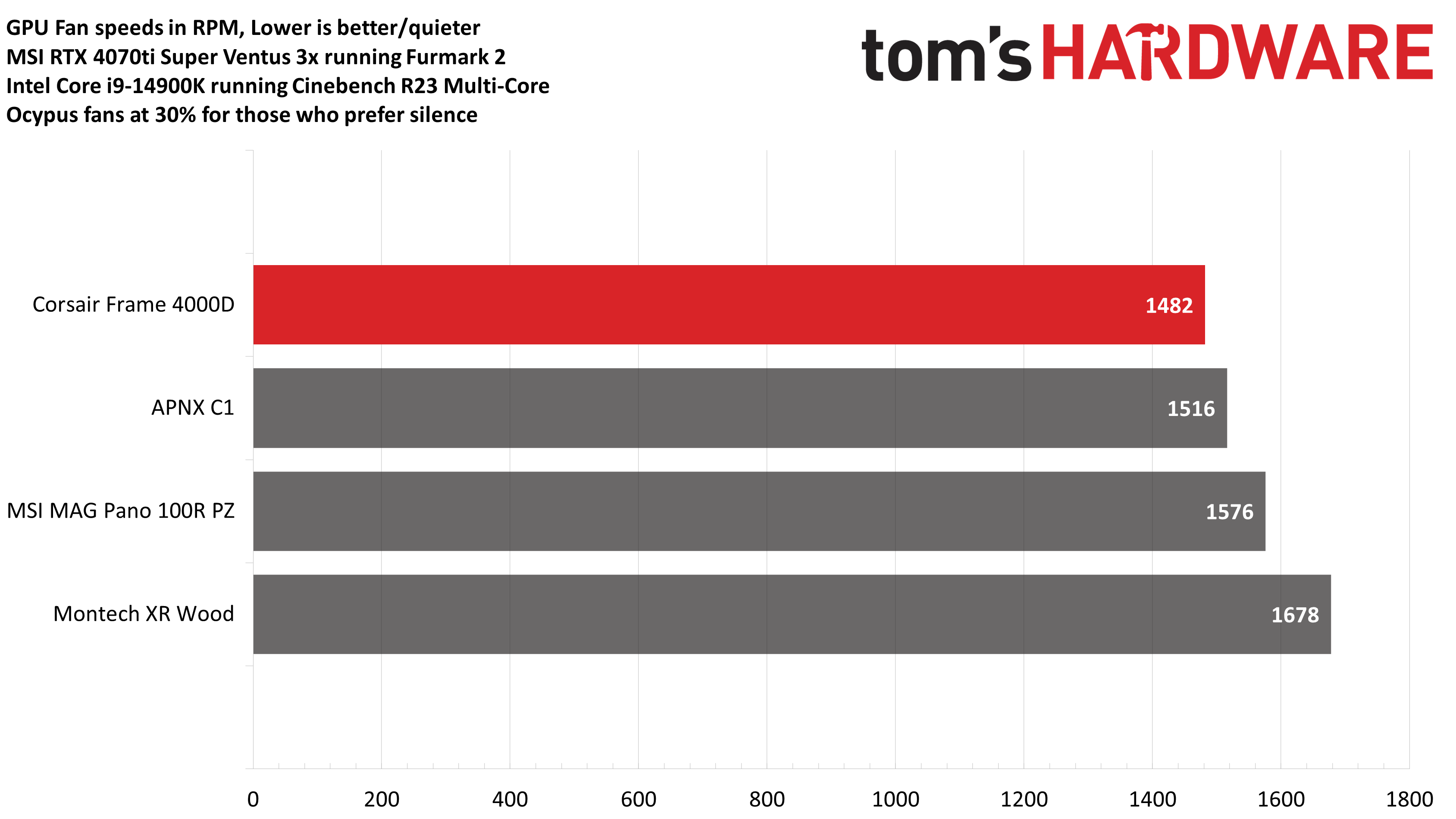
To evaluate how efficiently the case dissipates heat from the GPU, we’ve decided to compare the RPM speeds of the GPU’s fans instead of trying to control the fan speeds and measuring temperature. Corsair’s Frame 4000D again showed excellent performance here, with the GPUs fans only averaging 1482 RPM – the quietest result of all 4 cases tested for this review.
Maximum Thermal Load – Full fan speeds
For this next test, the fans are allowed to operate at their fastest (and loudest) speeds for those who want the best thermal performance without regard for noise levels. As before, the first test only stresses the CPU.
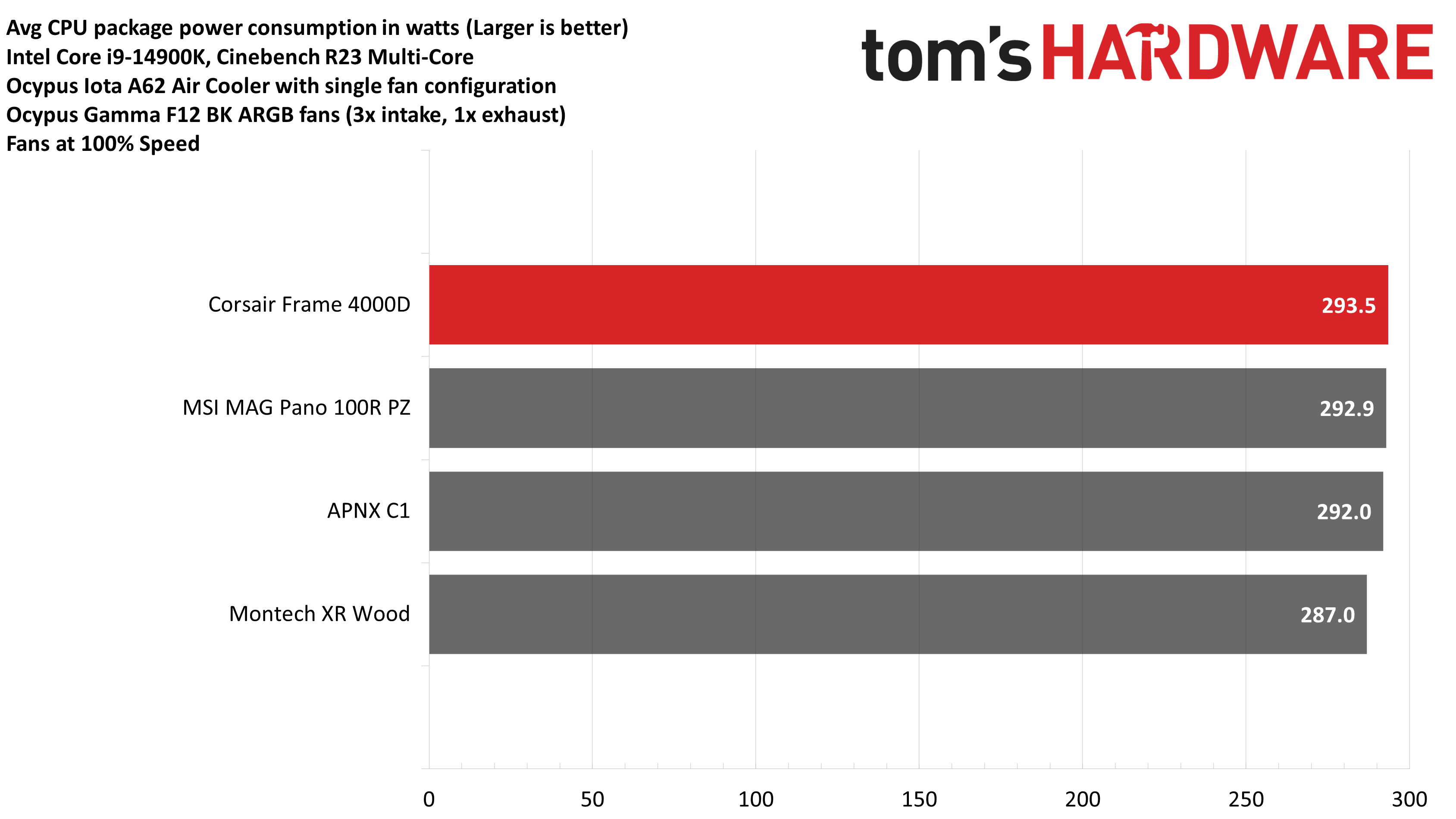
The results here have a small range, but Corsair’s Frame 4000D performed best, with a result of 293.5W cooled from the CPU on average.
Get Tom's Hardware's best news and in-depth reviews, straight to your inbox.
How does that change when a GPU load is added to the equation? Let’s take a look.
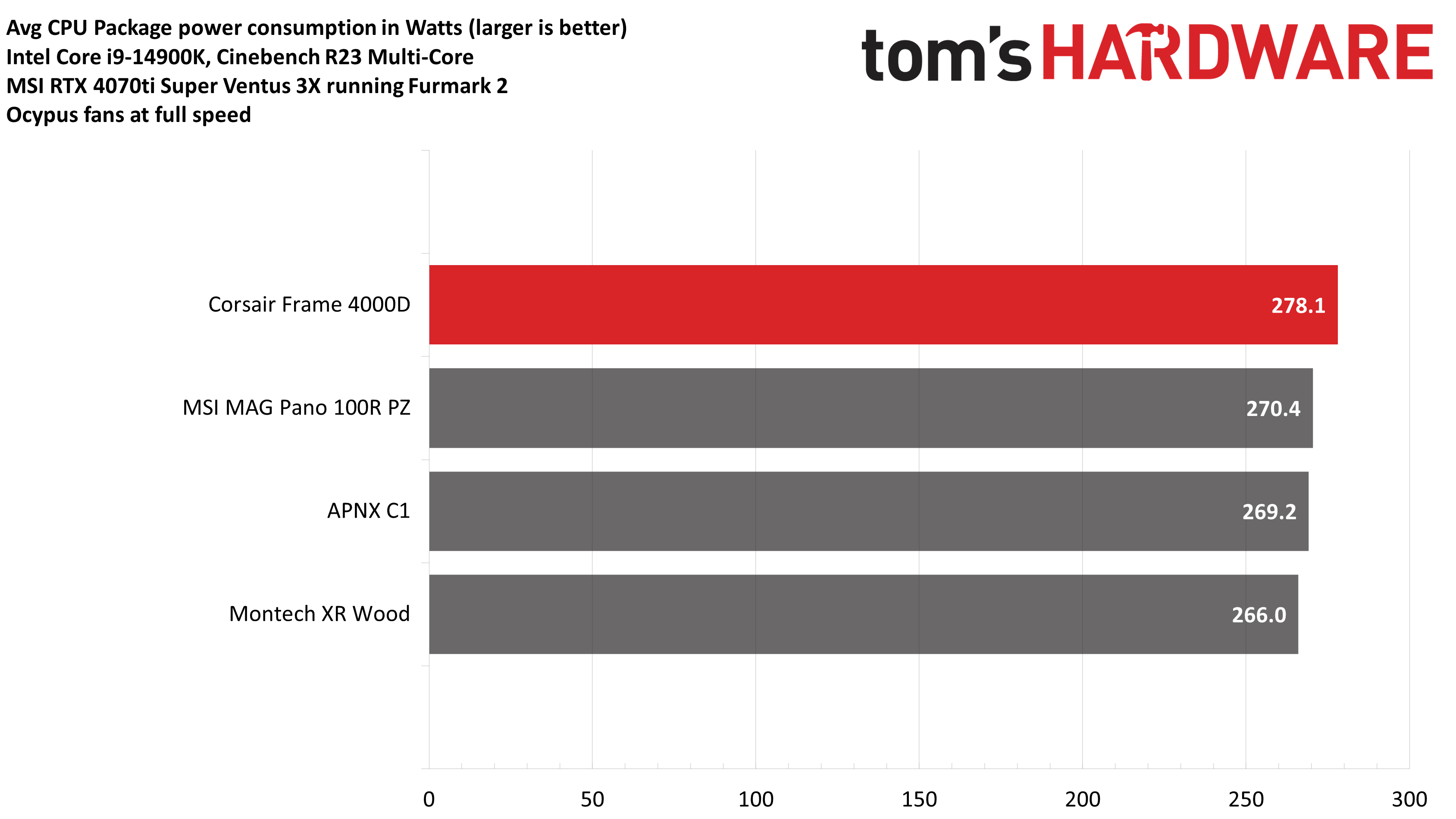
In contrast to the low-speed tests where fans are limited to 30% RPM, there’s a lower drop in wattage cooled when both the CPU and GPU are stressed, thanks to the power of the fans at their full speeds. Corsair maintains its leading position, providing the best overall cooling with 278.1W cooled during this test.
How about the GPU, though?
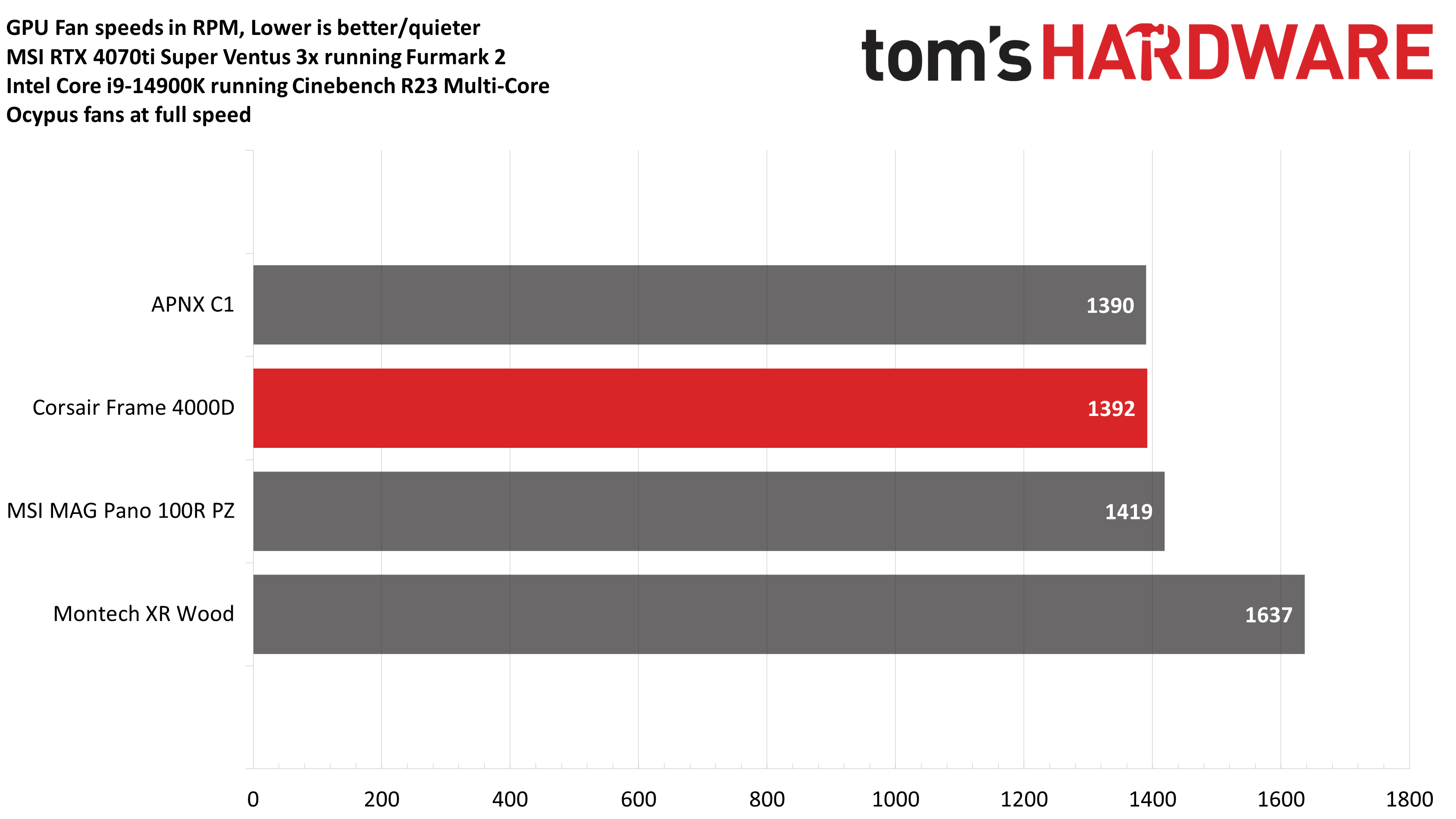
Corsair’s Frame technically slips to second place in terms of GPU fan speeds in this test, but a difference of only 2RPM is well within any margin of error and run-to-run variance. This shows that Corsair’s Frame 4000D effectively moves heat away from the GPU for the best performance possible.
A reminder about how to improve performance
Just as a reminder: If you’re looking for stronger thermal performance than shown in the benchmarks above, there are multiple ways to achieve this. In the testing above, I used three fans side-mounted for intake and one in the rear exhaust. If you want the best possible performance, you can also add fans to the front and top of the case.
Conclusion
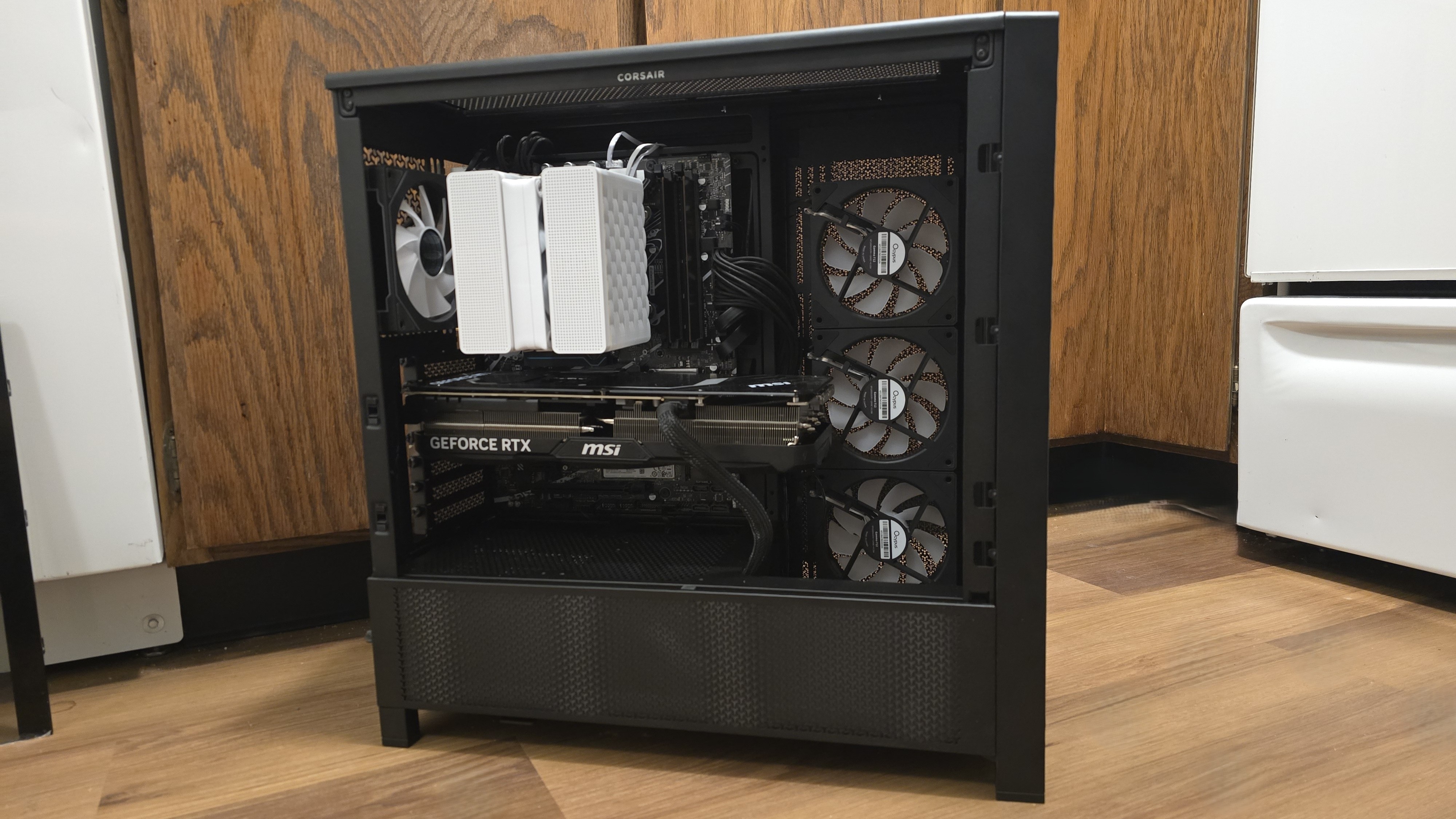
Corsair’s Frame 4000D provides excellent thermal performance in a lightweight package, with a reasonable price of only $94.99 USD (without fans), or as little as $5 more if you don’t want to bring your own. With both side and front intake fans supported, it can be configured in the style of your choosing.

Albert Thomas is a contributor for Tom’s Hardware, primarily covering CPU cooling reviews.
-
Heat_Fan89 It looks nice but I went with the NZXT H7 Flow 2024. That is a really nice case and I got it from Amazon for $90.Reply -
jezwinni A case with good performance, what does that even mean? It is a box.Reply
This obsession with temps is totally stupid, it 2025 and nobody over clocks, temps are irrelevant unless you forget to take the peel off the cooler cold plate. -
philged I love Corsair, and I'm not someone who generally cares much about the aesthetics of PC products, but for some reason the 3000D/4000D series has always felt unreasonably ugly. Just can't get past how bad that front grill looks.Reply -
truerock Reply
I've done some over clocking over the last couple of decades. It's an interesting thing to do if you are into that kind of thing - but, not important to 99% of desktop PC owners. It never made that noticeable a difference - to me.jezwinni said:A case with good performance, what does that even mean? It is a box.
This obsession with temps is totally stupid, it 2025 and nobody over clocks, temps are irrelevant unless you forget to take the peel off the cooler cold plate.
I remember purchasing my first SSD and upgrading my C:\ drive. Now that was very noticeable.
I just built a new desktop PC with CUDIMMs. I've putzed around with overclocking the memory - but, the difference wasn't noticeable - to me. -
extremepcs1 I just built a system in one this weekend. It's really good for the price. I wish I had known that the RGB fans included use standard ARGB headers though vs. Corsair's normal headers. I had to swap them out to connect them to a Commander XL hub. I would have bought the cheaper version without fans.Reply -
onlymostofthetime I recently purchased this exact case for my newest build. To say that I'm disappointed in Corsair would be an understatement. I had purchased 2 Corsair cases in the past, which I loved.Reply
This one, not so much. For starters, why on earth did they move the power button to the bottom of the case? This makes no sense, unless you want this behemoth of a case to literally sit on your desktop, which would be insane. So, no reason to change in the first place, and now that they have, it has made the product much worse. There are numerous additional foibles, like no back door to access the PSU. You have to manually unscrew that horizontal panel that sits above the PSU. It takes twice as long as if there were some thumb screws on the back. So again, stupid design with no reason for the change.
The Corsair product designers need to stop huffing paint. My score: 1.5/5 -
onlymostofthetime Reply
Also, no installation manual for any of their products anymore. Most of the time there's a QR code with a link to a "quick start guide" on their website, which is just useless. There are simplistic drawings for children. I would like a proper manual with diagrams showing me where the cables go and what goes where. Get on that, Corsair, and please see my note above about your employees and their concerning paint-huffing habits.onlymostofthetime said:I recently purchased this exact case for my newest build. To say that I'm disappointed in Corsair would be an understatement. I had purchased 2 Corsair cases in the past, which I loved.
This one, not so much. For starters, why on earth did they move the power button to the bottom of the case? This makes no sense, unless you want this behemoth of a case to literally sit on your desktop, which would be insane. So, no reason to change in the first place, and now that they have, it has made the product much worse. There are numerous additional foibles, like no back door to access the PSU. You have to manually unscrew that horizontal panel that sits above the PSU. It takes twice as long as if there were some thumb screws on the back. So again, stupid design with no reason for the change.
The Corsair product designers need to stop huffing paint. My score: 1.5/5 -
truerock I purchased a Corsair PC case recently. The thing I dislike is the box on the bottom for the PSU. The box gets in the way and makes it difficult to set things up inside the case. I have a 12-year-old Corsair PC case without the box, and it is much easier to set things up inside.Reply
I guess the PSU box is there for cosmetic reasons? It seems to serve no purpose.
The other thing I don't like is the ventilation holes for side fans. I have never used and will never use side fans.
Also, I have 3 HDDs in my PC case. The latest PC cases have no slots for HDDs and DVD drives.
I purchased a HDD bracket on Amazon and stuck it on the bottom with magnets. I had thought about using Velcro to stick the HDD bracket to the bottom of the case - but the magnets seem to work better. -
onlymostofthetime Reply
Oh yeah don't get me started on the lack of HD and DVD drive space. I personally play a lot of disc based, older games, so I have to use a USB DVD drive. Although with the wacky way they designed this case, the DVD drive will either be sitting on the floor in front of the power button, or dangling off the back IO port.truerock said:I purchased a Corsair PC case recently. The thing I dislike is the box on the bottom for the PSU. The box gets in the way and makes it difficult to set things up inside the case. I have a 12-year-old Corsair PC case without the box, and it is much easier to set things up inside.
I guess the PSU box is there for cosmetic reasons? It seems to serve no purpose.
The other thing I don't like is the ventilation holes for side fans. I have never used and will never use side fans.
Also, I have 3 HDDs in my PC case. The latest PC cases have no slots for HDDs and DVD drives.
I purchased a HDD bracket on Amazon and stuck it on the bottom with magnets. I had thought about using Velcro to stick the HDD bracket to the bottom of the case - but the magnets seem to work better.
I am concerned that the Corsair product designers have a debilitating paint huffing addiction. They should seek help, and then go back to designing good products that people can actually use. -
HardwiredWireless Reply
The Be Quiet Darkbase 901 has slots for HDDs and an optical drive And it is truly modular and can be installed with left or right window configurations. It's also a much higher quality than this one but it costs more as well. Frankly it's worth it.truerock said:I purchased a Corsair PC case recently. The thing I dislike is the box on the bottom for the PSU. The box gets in the way and makes it difficult to set things up inside the case. I have a 12-year-old Corsair PC case without the box, and it is much easier to set things up inside.
I guess the PSU box is there for cosmetic reasons? It seems to serve no purpose.
The other thing I don't like is the ventilation holes for side fans. I have never used and will never use side fans.
Also, I have 3 HDDs in my PC case. The latest PC cases have no slots for HDDs and DVD drives.
I purchased a HDD bracket on Amazon and stuck it on the bottom with magnets. I had thought about using Velcro to stick the HDD bracket to the bottom of the case - but the magnets seem to work better.
